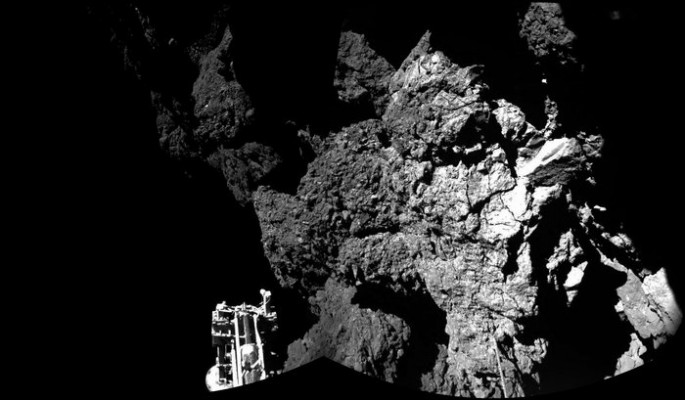Scientists from the European Space Agency are excited about the scientific experiments about to begin on the surface of a comet as they have regained contact again with a robotic spacecraft that suddenly sent signals, waking up from months of hibernation.
According to lander control engineer Barbara Cozzoni from the German Aerospace Center, the robotic lander called Philae has sent transmissions on June 13 and 14 where they are already being deciphered by the team.
ESA's Rosetta spacecraft was launched on March 2, 2004 where it took ten years for the spacecraft to reach the Comet 67P/Churyumov-Gerasimenko where it rendezvoused with the comet in August last year. Last November 12, the Rosetta spacecraft launched the Philae lander where it experienced a bumpy touch down, making it the first spacecraft to land on a comet.
However, due to its bad landing, Philae eventually stopped under a deep shadow of a cliff that prevented it from charging its solar panels. Philae lander is expected to work on the comet for three months but this setback has placed the lander under hibernation as its solar panels cannot gather enough solar energy to power its systems.
Upon landing, the lander sent back photos and data however, up until now, its batteries went empty and communications have stopped.
Scientists waited for months so that the lander can finally gather enough solar energy since the comet is speeding closer to the sun, reaching more sunlight to the lander.
Philae's Twitter account revealed a hopeful message on June 14 that said, I'll tell you more about my new home soon.
Cozzoni also revealed on Wednesday that scientists received good signals and information from the lander's unexpected transmissions where they have confirmed that all of Philae's four solar panels are indeed working and collecting enough solar energy to power the lander where its internal temperature has already returned to its working range.
According to senior ESA adviser Mark McCaughrean, the team needs to establish a more stable communications link with the Rosetta spacecraft and Philae in order to begin the originally scheduled experiments on the comet that can hopefully provide clues about the origin of life in the solar system.



























